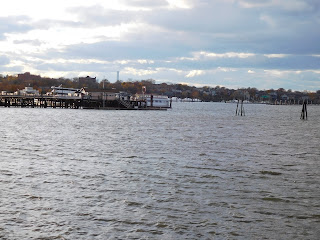 |
| Published on Earth Day, 1971 |
We have met the enemy and he is us.
So spake Pogo in the comic strip that bore his name. That quip is a twist on what Oliver Hazard Perry said after a naval battle: "We have met the enemy, and they are ours."
There is at least one situation in which the enemy is both ours and us. In particular, I am thinking about traffic jams--or, more specifically, being stuck in one. I would guess that just about anyone in that situation thinks of him or herself as being stalled by--that is to say, the victim of--a traffic jam. Does anyone see that, at the same time, he or she is a cause--however unwittingly--of that traffic stoppage?
 |
| From bluepearlgirl's world |
You are not stuck in traffic. You are traffic. I can almost imagine someone using those words as a prelude to a saying that was not, contrary to popular belief, uttered by Gandhi: "Be the change you wish to see."
Whatever you think of any of those slogans, you have to admit that "You are traffic" sign offers some good advice: Get a bike!







